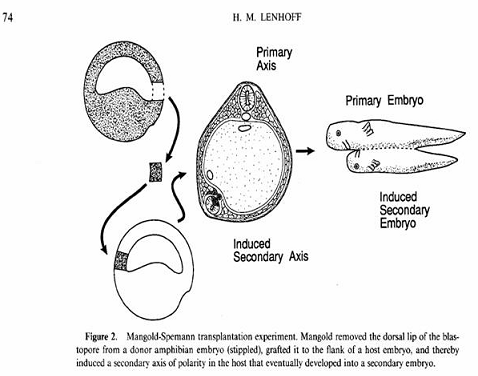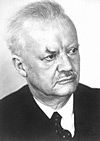




-
 طلب مصادر
طلب مصادر
السلام عليكم و رحمتة الله وبركاتهاما بعد :-
هل بامكان الاخوة الاكرام ان ياتوا لي ((بمصادر علمية اجنبية )) ترد على كل من يقول ان عجب الذنب هو قابل للتحلل و انه غير مسؤول عن تكون الانسان و انه لو كان قابلا لتحلل لوجدنا اعدادا كيرة منها في التربة ؟؟؟؟؟؟؟؟

التعديل الأخير تم بواسطة فداء الرسول ; 30-11-2012 الساعة 10:01 PM
سبب آخر: تصحيح قال بقابل
-

السلام عليكم ورحمة الله وبركاته
هذه الشبهة التى يثيرها اعداء الاسلام قام عالم الماني حاصل على جائز نوبل باثباتها لتعد اعجازا علميا في السنة المشرفة
اقتباس
و انه غير مسؤول عن تكون الانسان
1/ States of embryonic development
When a sperm enters an egg cell the development of the embryo starts. The ovule starts to divide: One cell becomes two, two become four, etc. Cell division and growth continue and the "embryonic disc" is formed, which consists of two layers:
1) The outer epiblast:
It contains the cytotrophoblast, which fixes the embryo at the uterus wall, so that the embryo can receive nutrition out of the mother`s blood.
2) The inner hypoblast
From this the embryo is formed by the power of Allah, the Almighty God. On the 15th day a first string is becoming visible, the so-called primitive streak. This string has a sharp end. And the first knot, called primitive node.
The side on which the primitive streak appears is known as the back of the embryonic disc. From primitive streak and primitive node all organs and tissue are formed as follows:
- The ectoderm forming skin and central nervous system
- The mesoderm forming soft muscles in the intestinal tract, the heart, the blood circulation, the bones, the sexual organs and uretic system, deeper tissue, lymph system and the milt.
- The endoderm forming stomach mucous membrane, respiratory system, organs of the intestinal tract, bladder, thyroid and the auditory canal.
Finally the primitive streak and node are torn away and form the tailbone. Conclusion: the tailbone contains the primitive streak and node and those are able to grow and can form three layers, from which the fetus is formed:
Ectoderm, mesoderm, endoderm.
An indication of the importance of the primitive streak in the embryonic development is that the British committee WARNEK (responsible for human fertilization and genetics) prohibits scientists to conduct experiments on fertilized embryos in which the primitive streak has already been formed.
2/ Fetal abnormity as a proof that the tailbone contains the mother cells for a human being
After forming and shaping of the fetus from the primitive streak and primitive node, which lie in the last vertebra of the tailbone, primitive streak and node keep their characteristics. In case of mutation of one of them a tumor (teratoma) would form in addition to the fetus, which represents an abnormal fetus with some fully shaped organs. That way a surgeon can find some complete organs, which can be any organ, when opening the tumor… teeth, hair, even hand or feet with nails (pictures exist although we will not present them). People learned by this that the tailbone really contains mother cells.

Hans Spemann experiments
Scientists found out that the cell formation and organization of the fetus is initiated by the primitive streak and primitive node. Before these parts form no differentiation of cells can take place. One of the most popular scientists, who proved this, was the German scientist Hans Spemann.
By his experiments with the primitive streak and the primitive node he found out that they organize the development of the embryo and called them for this reason "the primary organizer".
The German scientist started his experiments with amphibians by inserting a primary organizer he had cut out from one embryo under the epiblast of another embryo of the same age (first embryonic stage third or fourth week).
This led to the formation of a second embryo from the implanted part, which has been inserted into a new environment. The implanted part had influence on the surrounding cells of the new environment. That way a second embryo is formed in the first embryo.

Scheme of the development of a second embryo by implantation of the primary organizer. Source: Keith L. Moor. The Developing Human
Tailbone cells can not be degraded or destroyed
In 1931 Spemann ground the primary organizer and implanted it again. The grinding did not change the results of the experiment; the second embryo was formed anyhow. In 1933 Spemann and his scientists repeated the same experiment but this time they boiled the primary organizer before. But despite boiling a second embryo was formed. It was shown that the cells could not be influenced. In 1935 Spemann got the Nobel Prize for the discovery of the primary organizer.
Dr. Othman Al Djilani and Sheik Abd Majid Azzandani did some experiments on the tailbone in 2003/Ramadan1424 in the Sheik Abd Majid Azzanidanis house in Sana'a (Yemen). One of the two vertebras of the five tailbones was burned on a gas flame for 10 minutes until they were burned completely. (They had glowed red and then turned black).
They put the burned pieces into sterile boxes and brought them to a analysis laboratory in Sana'a (Al Olaki Laborytory) Dr. Saleh al Olaki, Professor for histology and pathology of the university of Sana'a analyzed the pieces and found out that the cells of the bone tissue of the tailbone ware not affected and had survived the flames (only muscles, fat and bone marrow were burned, while the cells of the tailbone were not affected).

The Nobel Prize in Physiology or Medicine 1935
"for his discovery of the organizer effect in embryonic development

Hans Spemann
Germany
University of Freiburg im Breisgau
Breisgau, Germany
b. 1869
d. 1941
تحمَّلتُ وحديَ مـا لا أُطيـقْ من الإغترابِ وهَـمِّ الطريـقْ
اللهم اني اسالك في هذه الساعة ان كانت جوليان في سرور فزدها في سرورها ومن نعيمك عليها . وان كانت جوليان في عذاب فنجها من عذابك وانت الغني الحميد برحمتك يا ارحم الراحمين
-

شكرا لك يا فداء الرسول ولكن هل يمكن ان تاتي لي مصدر الكلام المكتوب (رابط) ؟؟؟؟
-

شكرا على الرد يا فداء الرسول ولكن هل يمكن ان تعطني مصدر الكلام المكتوب فوق ((رابط)) ؟؟؟؟؟؟؟
-

التعديل الأخير تم بواسطة فداء الرسول ; 30-11-2012 الساعة 10:58 PM
تحمَّلتُ وحديَ مـا لا أُطيـقْ من الإغترابِ وهَـمِّ الطريـقْ
اللهم اني اسالك في هذه الساعة ان كانت جوليان في سرور فزدها في سرورها ومن نعيمك عليها . وان كانت جوليان في عذاب فنجها من عذابك وانت الغني الحميد برحمتك يا ارحم الراحمين
معلومات الموضوع
الأعضاء الذين يشاهدون هذا الموضوع
الذين يشاهدون الموضوع الآن: 1 (0 من الأعضاء و 1 زائر)
المواضيع المتشابهه
-
بواسطة kholio5 في المنتدى حقائق حول الكتاب المقدس
مشاركات: 28
آخر مشاركة: 13-09-2014, 06:36 AM
-
بواسطة الصارم الصقيل في المنتدى شبهات حول السيرة والأحاديث والسنة
مشاركات: 10
آخر مشاركة: 19-08-2014, 01:29 AM
-
بواسطة مروان ديدات في المنتدى حقائق حول الكتاب المقدس
مشاركات: 0
آخر مشاركة: 01-09-2012, 10:59 PM
-
بواسطة ياسر جبر في المنتدى الرد على الأباطيل
مشاركات: 3
آخر مشاركة: 04-07-2007, 08:59 PM
-
بواسطة محمد مصطفى في المنتدى شبهات حول القران الكريم
مشاركات: 2
آخر مشاركة: 26-07-2006, 01:57 PM
الكلمات الدلالية لهذا الموضوع
 ضوابط المشاركة
ضوابط المشاركة
- لا تستطيع إضافة مواضيع جديدة
- لا تستطيع الرد على المواضيع
- لا تستطيع إرفاق ملفات
- لا تستطيع تعديل مشاركاتك
-
قوانين المنتدى










 رد مع اقتباس
رد مع اقتباس








المفضلات